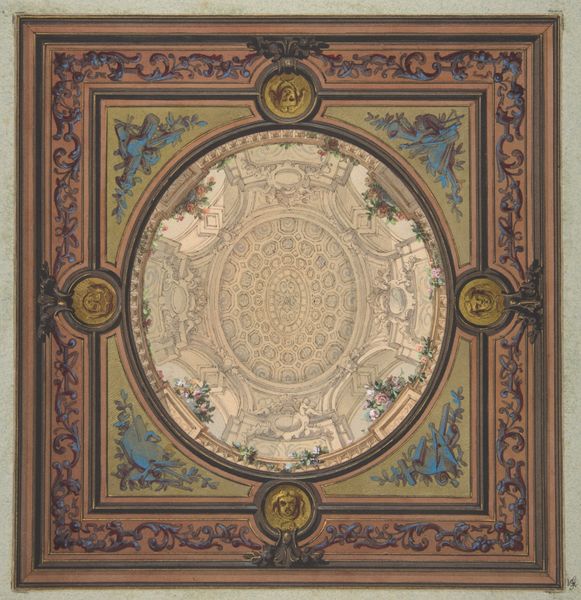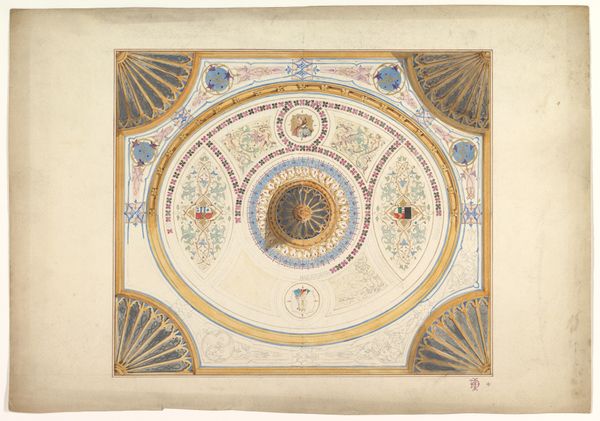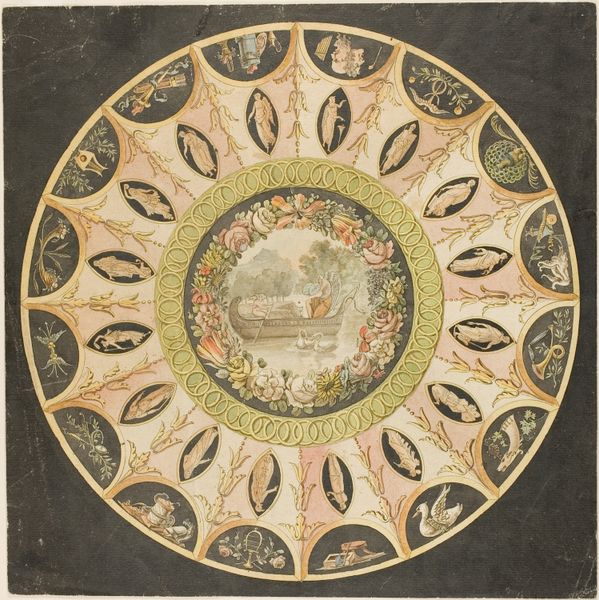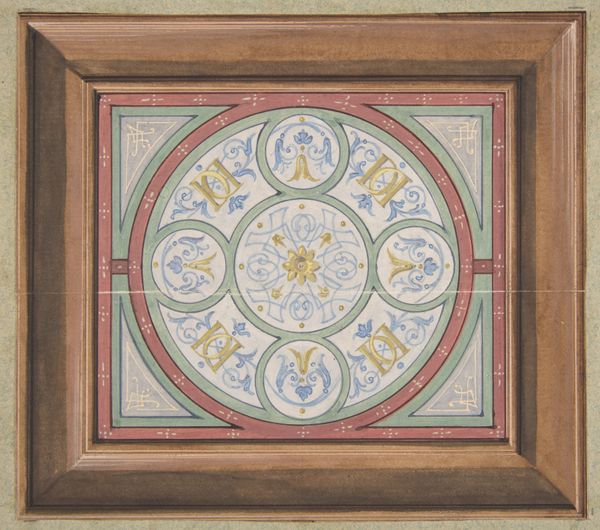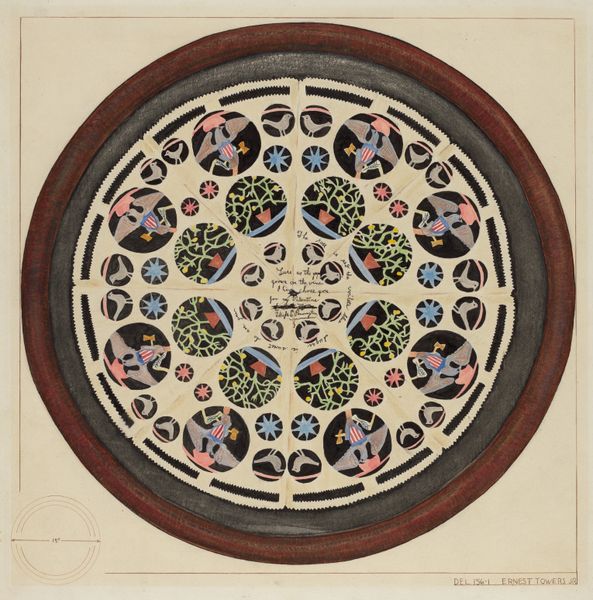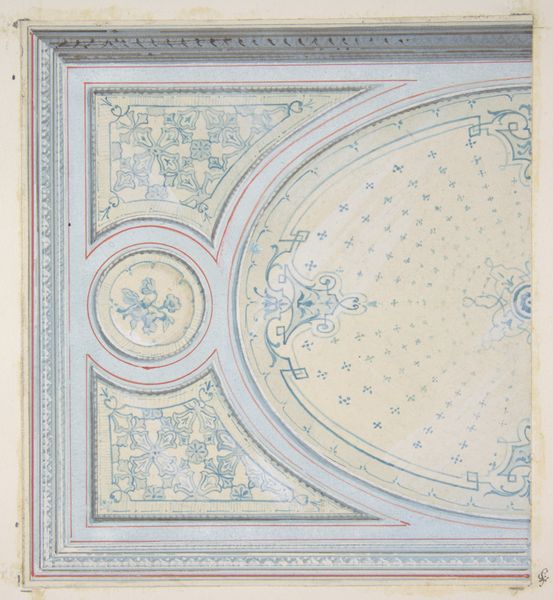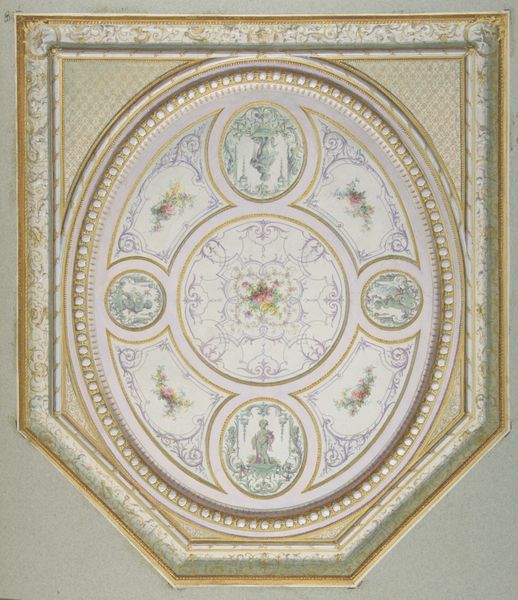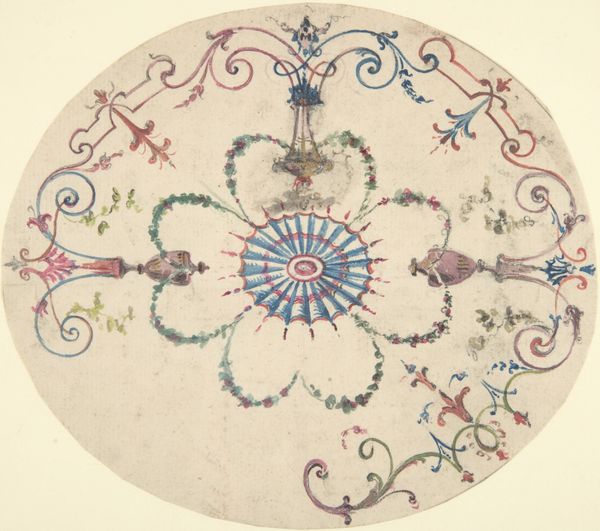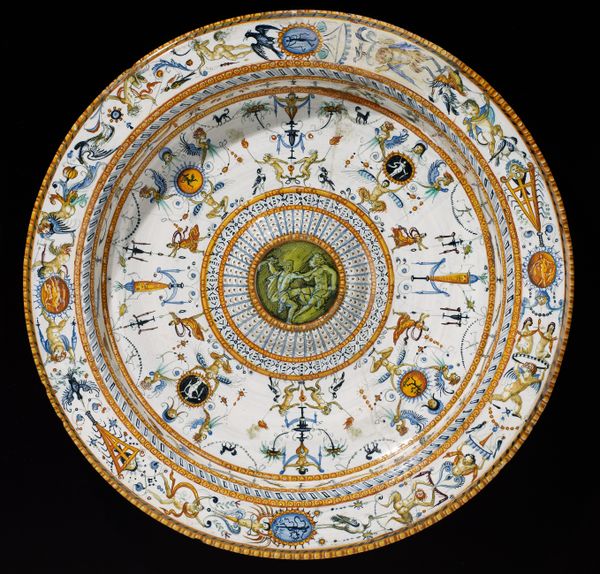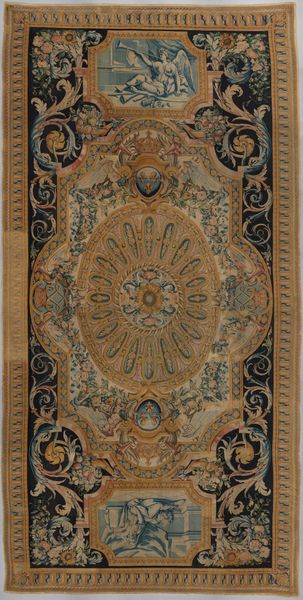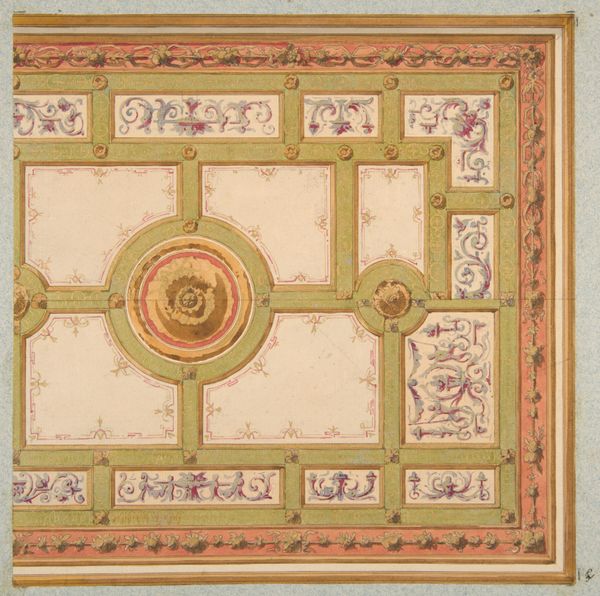
drawing, architecture
#
drawing
#
neoclassicism
#
sculpture
#
historic architecture
#
traditional architecture
#
geometric
#
history-painting
#
decorative-art
#
architecture
Copyright: Public Domain
Curator: Let's discuss this drawing, titled "Design for Octagonal Ceiling," created sometime between 1800 and 1900 by an anonymous artist. Editor: My immediate impression is one of delicacy. The colors are muted, almost pastel, and the composition feels very ordered and serene. It definitely feels like a period of grandeur. Curator: Indeed. This piece reflects a deep engagement with neoclassicism, evident in the symmetry and idealized forms. But, seeing it in our current moment, one can consider the social context of these lavish architectural plans, the disparities of wealth and labor they often represented. What class were these decorative choices being commissioned for and who made these drawings? Editor: From a purely formal perspective, the octagonal shape itself is fascinating. The artist’s skillful use of geometry—layering circles and decorative motifs—creates an illusion of depth and expansion, typical in architectural drawings from that era. Curator: The repeated use of angelic figures is worth noting, also. Consider what those figures symbolize and represent—divine right, or purity in a monarchial system, perhaps? What underlying messages are conveyed, reinforcing dominant ideologies? Editor: Precisely, and it's intriguing how those figures, along with shields and scroll motifs, are distributed across the space. Their placement is both decorative and structurally important, acting as visual anchors that guide the eye. You are completely right, there's symbolic intent in its visual elements that would resonate with the societal elites, of course. Curator: Looking at the central medallion, the vague sketch of what may be a female form brings so much to the whole of this "Design." We, as contemporary viewers, are tasked to contextualize it. Its incompleteness, within such a decorative setting, forces a broader discussion, I think. Editor: Agreed. Its beauty and balance almost belie the societal structures implicit in it. To view it now challenges us to decipher that intersection of pure artistic vision and socio-political expression. Curator: Absolutely. It encourages us to engage in this visuality while simultaneously being critically aware of the history it inhabits. Editor: In essence, it embodies that intersection between aesthetics and sociopolitical context you mentioned at the beginning of our conversation. It truly allows the past and the present to resonate with each other.
Comments
No comments
Be the first to comment and join the conversation on the ultimate creative platform.
